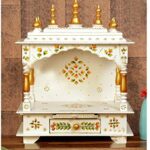Karva chauth festival of love and togetherness of Husband and wife
Karva Chauth: Navigating Love, Tradition, and Spiritual Harmony
In the cultural kaleidoscope of India, where traditions are as diverse as the landscapes themselves, one festival stands out as a testament to love, commitment, and enduring traditions – Karva Chauth. This Hindu festival, predominantly celebrated in North India, has deep roots in history, mythology, and cultural practices that have evolved over centuries. In this extensive exploration, we will embark on a journey to unravel the layers of Karva Chauth, from its historical origins and rituals to its modern-day interpretations, challenges, and the broader societal context.
Historical Tapestry: The Legends of Karva Chauth
At the heart of Karva Chauth lies a tapestry woven with legends, each contributing to the rich narrative of this celebrated festival. One of the most poignant stories is that of Queen Veeravati, whose unwavering dedication to her husband became the cornerstone of Karva Chauth’s origin.
Legend has it that Queen Veeravati, newly married and deeply in love, observed a strict fast on Karva Chauth to pray for her husband’s well-being. However, lacking the strength to endure the day-long abstinence, she succumbed to the pangs of hunger. Witnessing her suffering, her seven brothers, unable to bear her distress, devised a plan to create an illusion of the moon’s rise by reflecting light in a banyan tree’s leaves. Mistaking it for the real moon, Queen Veeravati broke her fast prematurely.
Tragically, news reached her that her husband had fallen critically ill. Distraught and desperate, she rushed to his side, facing numerous obstacles on her journey. Along the way, she encountered the divine presence of Goddess Parvati, who revealed the truth about the premature break of her fast. With newfound determination, Queen Veeravati observed Karva Chauth with unwavering sincerity, and miraculously, her husband’s life was restored.
This ancient legend, with its elements of devotion, sacrifice, and divine intervention, forms the historical bedrock on which Karva Chauth stands. It symbolizes the trials and triumphs inherent in married life and the strength of a woman’s commitment to her husband’s well-being.
Rituals: The Weaving of Tradition
The celebration of Karva Chauth unfolds with a series of rituals that create a vibrant tapestry of tradition and spiritual significance. The day begins with married women waking up before sunrise to partake in a pre-dawn meal called ‘Sargi’—a ritual that sustains them throughout the day. The fast, which starts at sunrise, is observed without consuming food or water until moonrise.
As the day progresses, women meticulously prepare for the evening ceremony. Intricate mehndi designs adorn their hands, symbolizing beauty and auspiciousness. Dressed in vibrant traditional attire, they create an atmosphere of festivity and anticipation. The exchange of ‘Karvas’ or earthen pots among married women further strengthens the communal bonds, as these pots are filled with sweets, bangles, and other symbols of married life.
The afternoon is often spent in prayers and socializing with other women, fostering a sense of camaraderie and shared experience. In the evening, the atmosphere becomes charged with excitement as women eagerly await the moonrise. The breaking of the fast is a poignant moment, often shared with husbands who actively participate by offering water and the first morsel of food. The moon, considered a symbol of auspiciousness, is venerated, and prayers are offered for the longevity and prosperity of their spouses.
Cultural Significance: Nurturing Tradition Across Generations
Beyond the personal and familial dimensions, Karva Chauth carries profound cultural significance, acting as a thread that weaves through generations and communities. It is a day that underscores the sanctity of marriage, highlighting the enduring bond between husband and wife. The festival’s rituals and traditions serve as a bridge connecting the past with the present, as grandmothers pass down age-old customs to their daughters and granddaughters.
Karva Chauth is more than a ritual; it is a living, breathing heritage that carries forward the essence of familial and cultural values. The exchange of Karvas and the intricate mehndi designs on women’s hands are not just aesthetic elements but symbols of a shared cultural identity. As families gather to celebrate, they are participating in a ritual that transcends individual households, fostering a collective sense of belonging to a larger cultural tapestry.
Evolution in Modern Times: Adapting Tradition to Contemporary Realities
While deeply rooted in tradition, Karva Chauth has evolved to reflect the changing dynamics of contemporary society. The festival, which was once primarily observed in rural settings, has found resonance in urban spaces as well. Women today approach Karva Chauth not only as a religious duty but also as a celebration of love and companionship.
Modern interpretations of the festival often emphasize equality and shared responsibility between spouses. Some couples choose to fast together, redefining traditional roles and reinforcing the idea that love and commitment are reciprocal. The celebration has also expanded beyond the confines of traditional norms, embracing diversity in marital relationships and acknowledging that love knows no bounds.
The application of technology has also played a role in transforming the way Karva Chauth is observed. With the advent of video calls and instant messaging, women separated from their husbands due to work or other commitments can still participate in the rituals virtually. This technological adaptation reflects the resilience of tradition in the face of changing circumstances.
Challenges and Criticisms: Navigating the Controversies
Like many cultural practices, Karva Chauth is not immune to criticisms and challenges. Some argue that the festival perpetuates gender stereotypes, reinforcing the idea that a woman’s well-being is intrinsically tied to her husband’s longevity. The physical strain of the fast is another point of contention, with some questioning its relevance in a modern, fast-paced world.
In response to these criticisms, there has been a discernible shift in perspective among some communities. While the essence of Karva Chauth remains intact, discussions around the festival now include conversations about personal choice, consent, and the evolving nature of marital relationships. Some families have chosen to adapt the rituals to be more inclusive and less rigid, allowing for a more flexible and individualized approach to the celebration.
Karva Chauth in the Global Context: A Cultural Bridge
As Indian communities spread across the globe, so too does the celebration of Karva Chauth. The festival, once confined to the Indian subcontinent, has transcended geographical boundaries, becoming a cultural bridge that connects diaspora communities to their roots. In foreign lands, the observance of Karva Chauth becomes a means of preserving cultural identity and fostering a sense of community among expatriates.
In many Western countries, where cultural diversity is celebrated, Karva Chauth has found a place among the myriad of festivals observed by different communities. The festival becomes an opportunity to share traditions, showcase the richness of Indian culture, and build connections between communities from different backgrounds.
The Future of Karva Chauth: A Continuation of Tradition
In contemplating the future of Karva Chauth, one cannot help but wonder how this age-old festival will continue to evolve in the coming years. Will it maintain its traditional roots, adapting to changing social dynamics, or will it undergo more radical transformations?
The essence of Karva Chauth lies in its ability to seamlessly blend tradition with contemporary realities. As societal norms shift and perspectives evolve, the festival is likely to embrace a more inclusive approach, recognizing and respecting the diverse ways in which love and commitment are expressed within marital relationships.
The enduring popularity of Karva Chauth suggests that, despite the challenges and criticisms, it continues to hold a special place in the hearts of those who celebrate it. Its ability to adapt and evolve while retaining its core values ensures that it remains relevant to each generation.
In conclusion, Karva Chauth is a celebration that transcends the boundaries of time and space, connecting individuals and communities through the shared experience of love, tradition, and spirituality. As the moon rises on Karva Chauth, casting its ethereal glow on the festivities below, it symbolizes not just the culmination of a day-long fast but the eternal cycle of tradition, adaptation, and the enduring spirit of love that weaves through the fabric of human connection.

Industrial Vastu: Enhancing Productivity and Prosperity in Your Factory

Vastu Directions: Unlocking the Secrets to Prosperity in Vastu Shastra



Modern Celebrations
In contemporary times, Karva Chauth has taken on new dimensions. While the core traditions remain intact, the festival has also become a symbol of love and togetherness. Many husbands fast along with their wives, expressing their love and affection. Additionally, the festival has become a fashionable occasion for women to dress up in excellent traditional attire and jewellery.
Evolution in Modern Times:
While rooted in tradition, Karva Chauth has evolved to mirror the changing dynamics of contemporary society. The festival, once primarily observed in rural settings, has found resonance in urban spaces as well. Women today approach Karva Chauth not only as a religious duty but also as a celebration of love and companionship.
Modern interpretations of the festival often emphasize equality and shared responsibility between spouses. Some couples choose to fast together, redefining the traditional roles and reinforcing the idea that love and commitment are reciprocal. The celebration has also expanded beyond the confines of traditional norms, embracing diversity in marital relationships and acknowledging that love knows no bounds.
Rituals that Weave the Fabric of Karva Chauth:
The day of Karva Chauth unfolds with a tapestry of rituals that elevate the festival to a sacred and joyous occasion. The fast begins at sunrise and extends until moonrise, with married women abstaining from food and water throughout the day. The fast is not just a physical sacrifice but a spiritual commitment, symbolizing the deep love and concern for their husbands’ well-being.
As the day progresses, women engage in meticulous preparations. Intricate mehndi designs adorn their hands, and they dress in vibrant traditional attire. The spirit of camaraderie is palpable as women gather to exchange Karvas – earthen pots filled with sweets, bangles, and other symbols of married life. This exchange is a testament to the solidarity among married women, creating a sense of community and shared experience.
The anticipation reaches its zenith as women eagerly await the moonrise. The breaking of the fast is a poignant moment, often shared with husbands who offer water and the first morsel of food. The moon, considered a symbol of auspiciousness, is venerated, and prayers are offered for the longevity and prosperity of their spouses.
Cultural Significance:
Beyond the personal realm of marital love, Karva Chauth holds profound cultural significance. It is a day that reinforces the sanctity of marriage, highlighting the enduring bond between husband and wife. The festival transcends regional boundaries, uniting women in a collective celebration that echoes the rich tapestry of Indian culture.
Karva Chauth is more than a ritual; it’s a cultural ode to the strength of familial ties and the resilience of love. The traditions associated with the festival serve as a bridge connecting generations, as grandmothers pass down age-old customs to their daughters and granddaughters. In this way, Karva Chauth becomes a living, breathing heritage, carrying forward the essence of familial and cultural values.
Conclusion
Karva Chauth is not just a traditional ritual but a celebration of love, commitment and bond between husband and wife. It reflects the deep-rooted values of Indian culture and showcases the lengths to which people are willing to go for the well-being of their loved ones. This festival is a beautiful reminder of the significance of love and sacrifice in the institution of marriage, making it one of the most beloved festivals in India.
So, as you celebrate Karva Chauth, remember that it’s not just about fasting but about the enduring love and devotion that continue to make it a cherished tradition in the hearts of millions.

